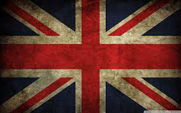 |
Email: mment340@gmail.com Phone: 07876 377609 |
||||||||||||
| 1 | |||||||||||||
 |
|||||||||||||
Custom Made Rifle Bullets Hand Crafted in Liverpool, England |
|||||||||||||
| Building a Bullet Wimbledon Match |
|||||||||||||
The Wimbledon Match bullets have a traditional tangent ogive, building them involves many of the same procedures as the more complex bullets I make. The exact same procedures are used in the Mistral range of bullets. |
|||||||||||||
Cleaning An essential element in bonding the lead core to the jacket is that all metal parts are clean and free from any form of grease. I use a specialist surface active agent containing anions and cations at about 60oC to remove all traces of grease, the elevated temperature speeds up the process. The detergent then needs to be removed, using copious quantities of clean fresh water, several small washes are far more effective than a single large wash, then they need to be dried. I use a hot air blower to dry everything. This is my standard method of cleaning. For bonded core bullets, once everything is clean and dry, the components should only be handled when wearing nitrile rubber gloves, even the natural oils from your skin can prevent the bonding process from being successful. |
|||||||||||||
Weighing Weighing components should only be carried out in a draft free room at constant temperature, and the components you are weighing should also be at ambient temperature. Hot or cold items being weighed will cause thermals around the balance causing variations in weight readings. This applies equally to when you are reloading your ammunition! Note: I am an analytical chemist, I’m used to using balances (that is the correct term!) that cost thousands of pounds, not a couple of hundred. The reloading scales we use to make ammunition, and I use to make bullets, are adequate for what we need, but that is all! |
|||||||||||||
 |
|||||||||||||
Procedure I’m going to use the 69 grain .223 Wimbledon Match bullet as the example in this case, each of the stages are depicted in the picture above;
The jackets and cores are now ready to be made into bullets |
|||||||||||||
Making the Bullets
Our bullets are now ready for use. |
|||||||||||||
©MME Custom Rifle Bullets 2020 |
|||||||||||||